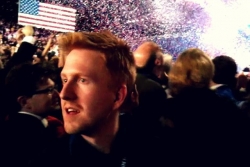A change in perspective can change everything. A complex jigsaw puzzle may suddenly be solved by stepping back ... Taking the dog for a walk ... Or going to the gym. Physicists and mathematicians often work in similar fashion: taking a step back, looking at a complex problem in a new way, and addressing it with new tools.
That was true for Princeton chemist Salvatore Torquato. Funded by the Department of Energy’s Office of Basic Energy Sciences, Dr. Torquato took a new look at two truly difficult problems in mathematics (as if there are many easy ones!), reformulated them as problems in physics, and in doing so, opened up new possibilities for new solutions and new applications in a variety of unlikely areas.
Specifically, Dr. Torquato examined the "covering" and "quantizer" problems of geometry. The covering problem looks at arranging overlapping spheres to cover the maximum amount of space in the most efficient way. The quantizer problem involves finding an optimal point configuration, in finding the most efficient way to express large quantities of data as accurately as possible.
In a sense, Dr. Torquato pulled those abstract mathematical equations off the blackboard and put them into the physics freezer. He realized that those geometric problems could be reformulated as equations describing molecules in their lowest state of energy – when they approach absolute zero. In such states, the total energy of all the particles in the system is at its minimum. As he put it, "What appear to be abstract mathematical problems can be related to the cooling of special liquids that undergo phase transitions to crystal states at a temperature of absolute zero."
Physicists had previously looked for ways to describe these minimum-energy systems, but had found it difficult to describe the complex interactions and predict the resulting particle patterns. By relating the two problems, Dr. Torquato found new tools to solve both.
Science breakthroughs often come that way, in small steps back to gain a new perspective, and then small steps ... and even giant leaps forward. For instance, about 150 years ago (1865), a Scottish scientist named James Maxwell published a set of equations showing how two seemingly unconnected phenomena, electricity and magnetism, were intimately related.
A few decades later, an obscure clerk working in a Swiss patent office took another look at those equations, and began to see the world in a new way. The reformulated equations of Maxwell became the basis of Albert Einstein’s theory of special relativity.
Today, Dr. Torquato’s work may help scientists detect the gravitational waves that Einstein predicted. It may also lead to a better fundamental understanding of low-temperature states of matter and their associated physical properties. Another potential benefit of Dr. Torquato’s new perspective is the development of better computational techniques to simulate low-temperature states of matter, which in turn could lead to the design of novel materials in the future. His work could also have applications in areas ranging from wireless communications network layouts to data compression and coding and cryptography.
More complex problems are out there. They’re waiting for scientists like Salvatore Torquato to take a step back, gain a new perspective and open a new world.
For more information on the Department’s Office of Science, please go to: http://www.science.doe.gov/.


